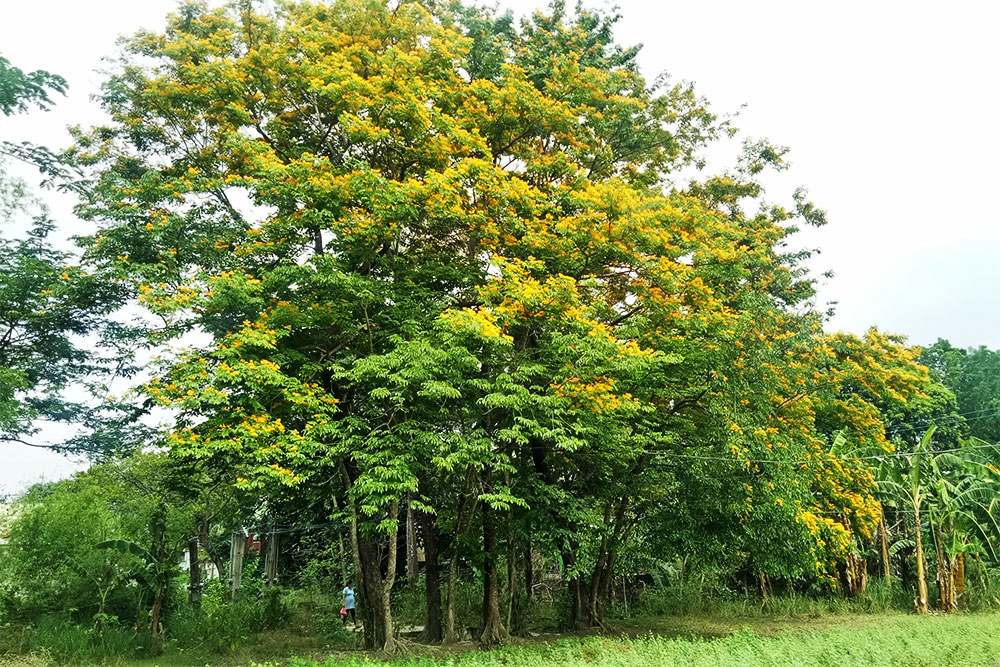Commonly known as Amboyna wood, Malay padauk, Papua New Guinea rosewood, Philippine mahogany, Andaman redwood, Burmese rosewood, angsana, or Pashu padauk. Flowers are yellow, small and fragrant. Fruit pod is flat, membranous and rounded that looks like a rounded leaf which can easily dispersed by the wind when dried. In the Philippines, flowering is from February to May. Narra is good in maintaining soil stability and fertility.
Binomial/Scientific Name:
Pterocarpus indicus
Origin:
Narra can be found in many southeastern Asian countries as well as in northern Australasia and the western Pacific Ocean islands.
Height:
Can grow up to 30-40 m tall.
Propagation:
Seeds
The fruit pod contains two-three seeds that mature for about 4 months. It is preferable to germinate seeds in shaded area.
Cuttings
Stem cutting (about 10 inches) from around 20 years old tree and planted in a seedling bag under a shaded area. Bigger (about 2-3 inches or larger) stem cutting will give a better rooting. Trees from larger stem cuttings are more susceptible to heart rot disease and may not be recommended when planning to use tree for wood.
Found in:
In the Philippines, at low and medium altitudes. In primary and in some secondary forests.
Usage:
Ornamental
The yellow to yellow-orange flowers of Narra Tree is spectacular to behold when it blooms.
Shade
This tree is tall and has dome-shaped crown. It’s branches are long and droopy.
Wood
Narra is an excellent wood material for making furniture. It is resistant to termites and has a pleasant cedar smell. When processed, it has a purplish color.
Medicinal
Can help cure diseases like arthritis, diabetes, asthma, diarrhea, and many more.
Cultivation:
Grows best in open areas. Can grow mostly in any kind of soil.
Interesting Notes:
Narra is the national Tree of the Philippines and it is also requires a permit to cut down the tree.
